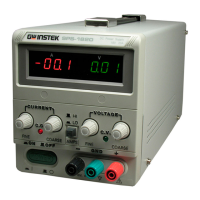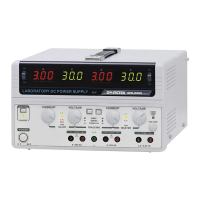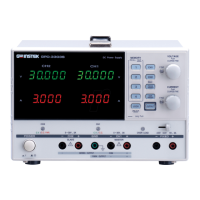SPS Power Supply User Manual
6
Fuse
WARNING
x Fuse type: 115V input: T 10A 250V; 230V input:
T 6.3A 250V
x To ensure fire protection, replace the fuse only
with the specified type and rating.
x Disconnect the power cord before replacing the
fuse.
x Make sure the cause of fuse blowout is fixed
before replacing the fuse.
Cleaning the
power supply
x Disconnect the power cord before cleaning the
power supply.
x Use a soft cloth dampened in a solution of mild
detergent and water. Do not spray any liquid
into the power supply.
x Do not use chemicals containing harsh products
such as benzene, toluene, xylene, and acetone.
Operation
Environment
x Location: Indoor, no direct sunlight, dust free,
almost non-conductive pollution (Note below)
x Relative Humidity: < 80%
x Altitude: < 2000m
x Temperature: 0°C to 40°C
(Pollution Degree) EN 61010-1:2001 specifies pollution degrees and
their requirements as follows. The power supply falls under degree
2.
Pollution refers to “addition of foreign matter, solid, liquid, or
gaseous (ionized gases), that may produce a reduction of dielectric
strength or surface resistivity”.
x Pollution degree 1: No pollution or only dry, non-conductive
pollution occurs. The pollution has no influence.
x Pollution degree 2: Normally only non-conductive pollution
occurs. Occasionally, however, a temporary conductivity caused
by condensation must be expected.
x Pollution degree 3: Conductive pollution occurs, or dry, non-
conductive pollution occurs which becomes conductive due to
condensation which is expected. In such conditions, equipment
is normally protected against exposure to direct sunlight,
precipitation, and full wind pressure, but neither temperature
nor humidity is controlled.

